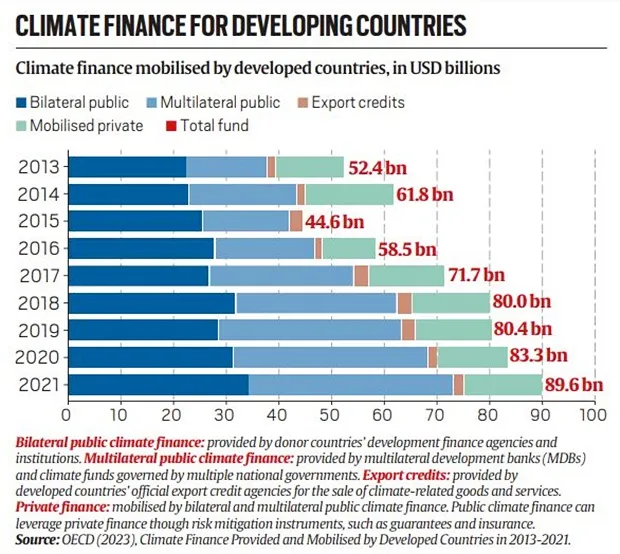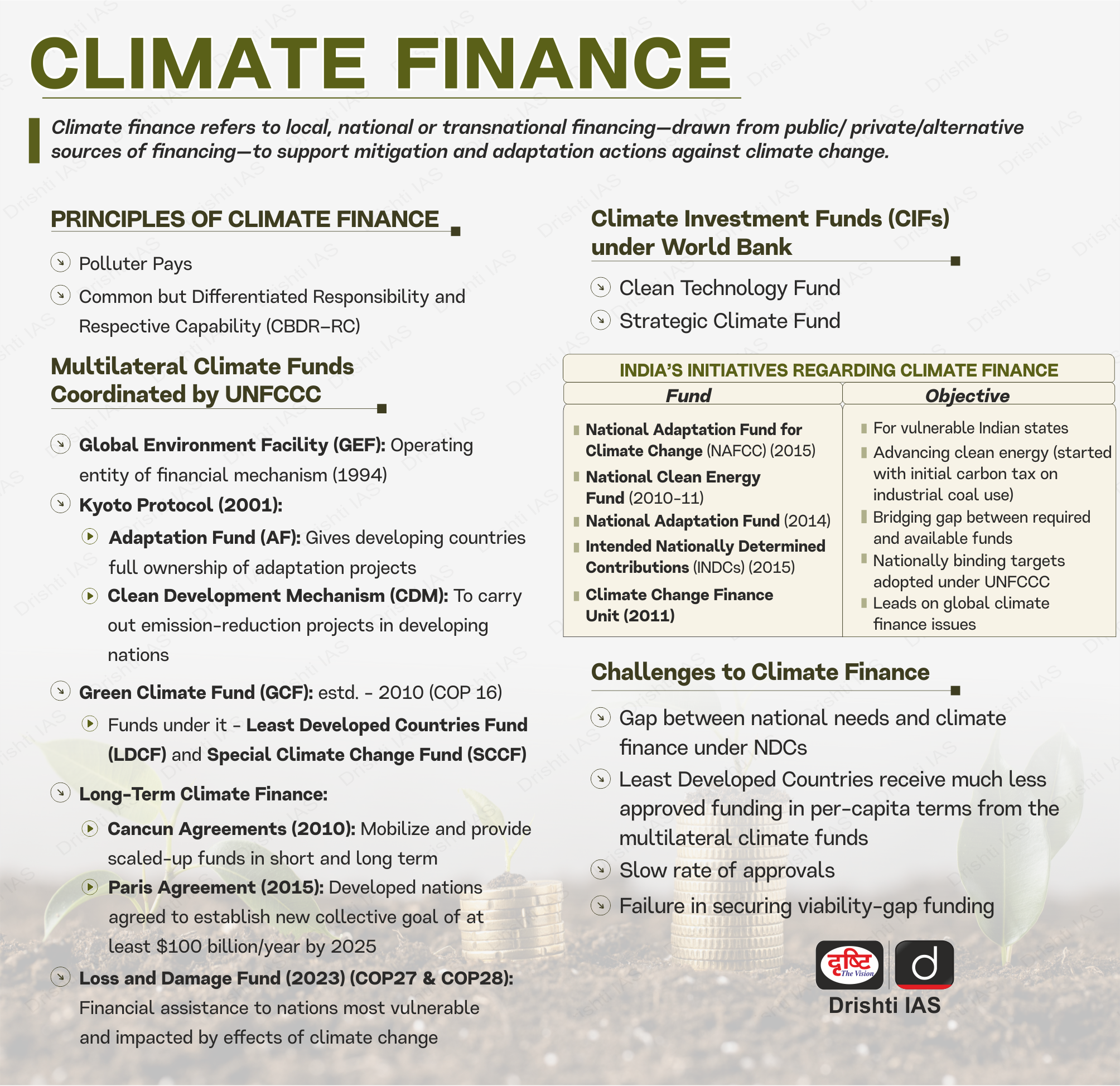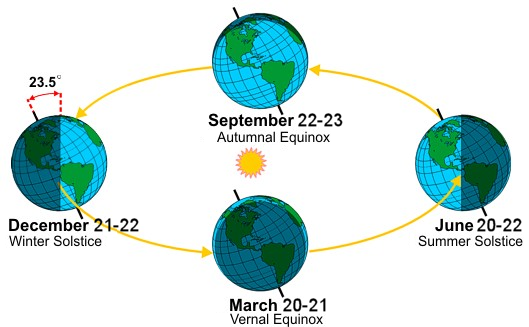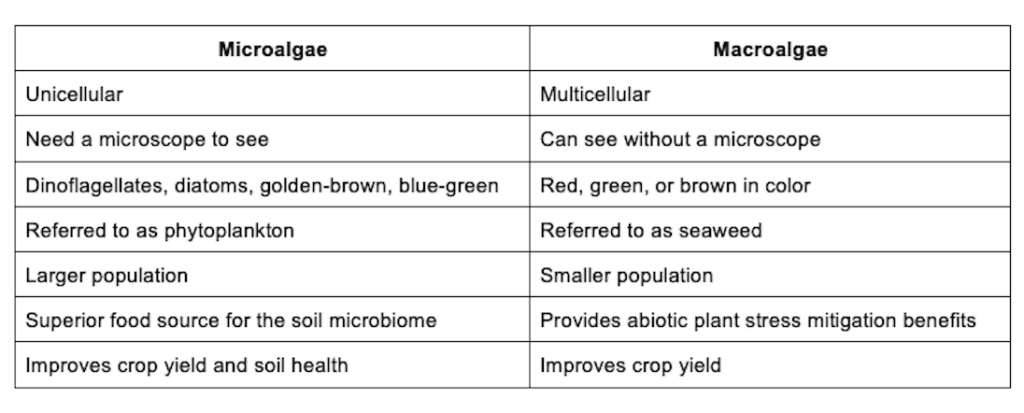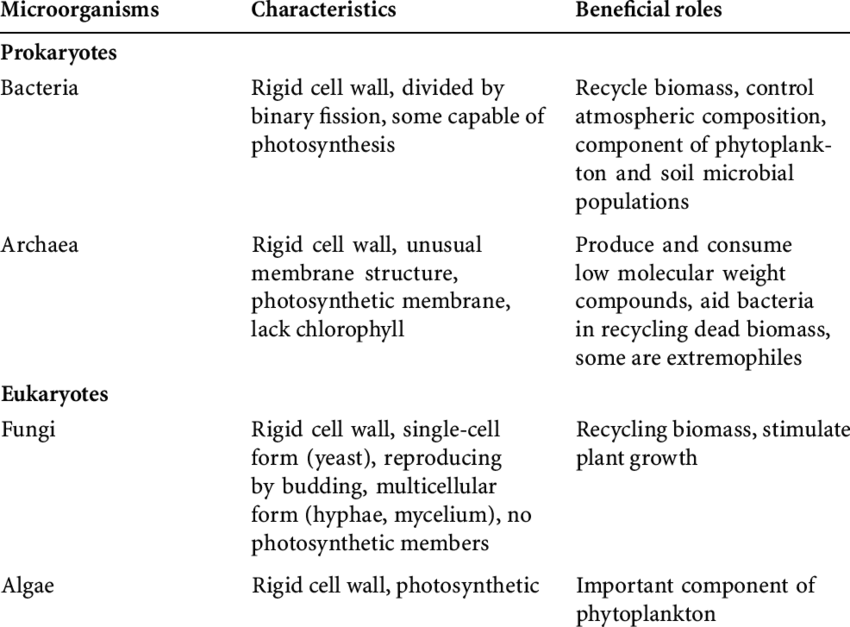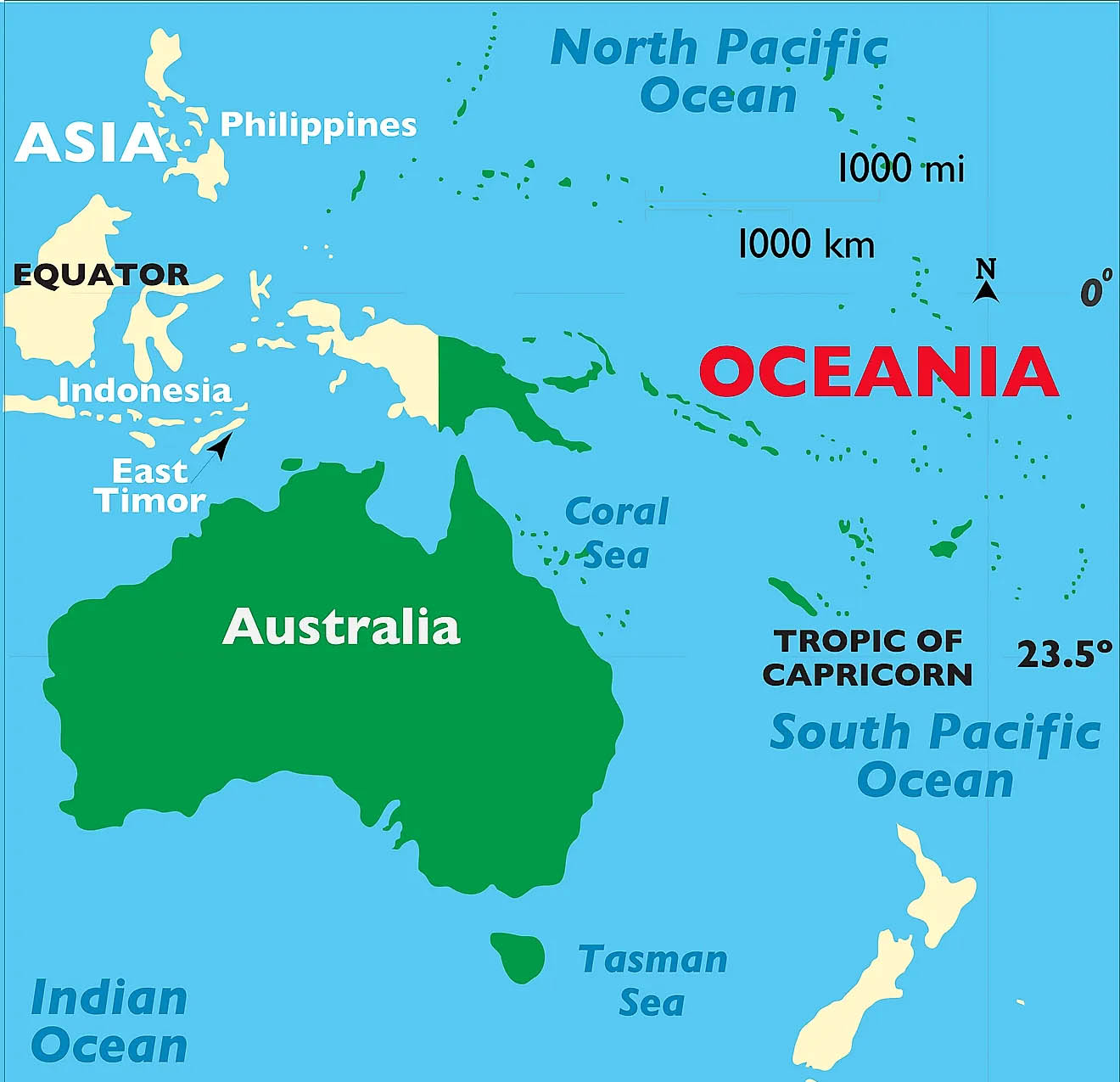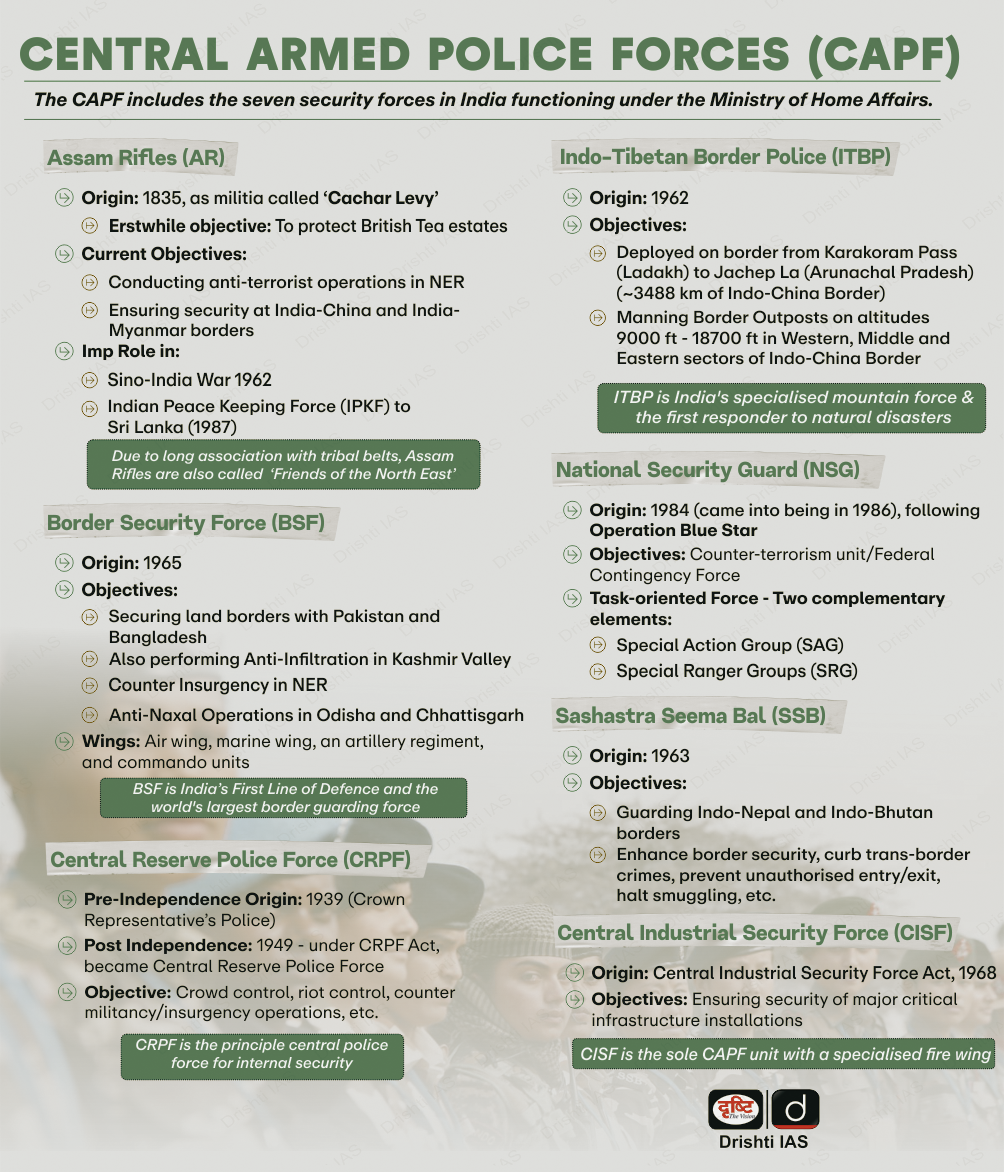Biodiversity & Environment
Great Nicobar Island Project Conundrum
For Prelims: Great Nicobar Island, National Green Tribunal (NGT), Shompen, Particularly Vulnerable Tribal Group (PVTG), Nicobar Megapode bird, leatherback turtles
For Mains: Significance and Concerns Related to Great Nicobar Island Project
Why in News?
Recently, the opposition party has described the proposed Rs 72,000-crore infrastructure upgrade at the Great Nicobar Island as a "grave threat" to the island's indigenous inhabitants and fragile ecosystem, and demanded immediate suspension of all clearances and a thorough, impartial review of the proposed project, including by the concerned Parliamentary committees.
Great Nicobar Island
- Great Nicobar is the southernmost and largest of the Nicobar Islands, a sparsely inhabited 910-sq-km patch of mainly tropical rainforest in southeastern Bay of Bengal.
- Indira Point on the island, India’s southernmost point, is located 90 nautical miles (<170 km) from Sabang at the northern tip of Sumatra, the largest island of the Indonesian archipelago.
- The Andaman and Nicobar Islands consist of 836 islands, divided into two groups known as the Andaman Islands located in the north and the Nicobar Islands situated in the south, separated by the 10° Channel which is 150 kilometres wide.
- Great Nicobar has two national parks, a biosphere reserve, small populations of the Shompen, Onge, Andamanese and Nicobarese tribal peoples, and a few thousand non-tribal settlers.
What is the Great Nicobar Island Project?
- About:
- The Great Nicobar Island (GNI) project, launched in 2021, is a mega project to be implemented at the southern end of the Andaman and Nicobar islands.
- It involves developing a trans-shipment port, an international airport, township development, and a 450 MVA gas and solar-based power plant on the island.
- The project was implemented after a report by NITI Aayog which identified the potential to utilise the advantageous position of the island, which is approximately equidistant from Colombo in Sri Lanka to the southwest and Port Klang (Malaysia) and Singapore to the southeast.
- The Great Nicobar Island (GNI) project, launched in 2021, is a mega project to be implemented at the southern end of the Andaman and Nicobar islands.
- Features:
- The mega infrastructure project is being implemented by the Andaman and Nicobar Islands Integrated Development Corporation (ANIIDCO) and is proposed to include an International Container Trans-shipment Terminal (ICTT), a greenfield international airport.
- It is close to the Malacca Strait, the main waterway that connects the Indian Ocean to the Pacific, and the ICTT is expected to allow Great Nicobar to participate in the regional and global maritime economy by becoming a major player in cargo transshipment’.
- The site for the proposed ICTT and power plant is Galathea Bay on the southeastern corner of Great Nicobar Island, where there is no human habitation.
- Strategic Importance:
- The upgrade is aimed at facilitating the deployment of additional military forces, larger and more warships, aircraft, missile batteries, and troops.
- Close surveillance of the entire area around the archipelago, and the building up of a strong military deterrence at Great Nicobar is of vital importance to India’s national security.
- The island is close to the Malacca Strait, the main waterway that connects the Indian Ocean to the Pacific, and the ICTT is expected to allow Great Nicobar to participate in the regional and global maritime economy by becoming a major player in cargo transshipment’.
- The Bay of Bengal and Indian Ocean regions are extremely important for India's strategic and security interests. This is because the Chinese military (the People's Liberation Army Navy) is trying to increase its presence and influence in this entire region.
- India is particularly concerned about the possibility of China building up its naval forces at important choke points in the Indo-Pacific area, such as the Malacca, Sunda, and Lombok Straits.
- Furthermore, China is attempting to expand its foothold in this region by building a military facility on the Coco Islands, which are located just 55 km north of India's Andaman & Nicobar Islands.
- This raises concerns for India, as the Andaman & Nicobar Islands are strategically very important for India's maritime security in the region.
- The upgrade is aimed at facilitating the deployment of additional military forces, larger and more warships, aircraft, missile batteries, and troops.
What are the Challenges Related to the Great Nicobar Island Project?
- Impact on Indigenous Tribes: The Shompen and Nicobarese are a Particularly Vulnerable Tribal Group (PVTG) of hunter-gatherers, with an estimated population of only a few hundred individuals. They live in a tribal reserve on the island.
- There are serious concerns that the proposed infrastructure upgrade could have a potentially devastating impact on the Shompen tribe and their way of life, which is closely tied to the island's natural environment.
- Also, the project violates the letter and spirit of the Forest Rights Act (2006), which holds the Shompen as the sole legally empowered authority to protect, preserve, regulate and manage the tribal reserve.
- Threat to Island Ecology: The project will impact the island’s ecology with the felling of nearly a million trees. It is feared that the port project will destroy coral reefs with spinoff effects on the local marine ecosystem, and pose a threat to the terrestrial Nicobar Megapode bird and leatherback turtles who nest in the Galathea Bay area.
- This area is about 15% of the GNI’s land mass and constitutes one of the country’s largest forest diversions in a nationally and globally unique rainforest ecosystem.
- Seismic Vulnerability: Proposed port is located in a seismically volatile zone, which experienced permanent subsidence of around 15 feet during the 2004 tsunami. This raises concerns about the safety and viability of constructing such a large-scale infrastructure project in a high-risk, disaster-prone area.
- Lack of Adequate Consultation: There is an accusation against the local administration of not consulting the Tribal Council of Great and Little Nicobar Islands adequately, as per legal requirements.
- In April 2023, National Green Tribunal (NGT) declined to interfere with the environmental and forest clearance granted to the project. The Tribunal, however, ordered that a high-power committee should be constituted to look into the clearances.
Way Forward
- Inclusion of Tribal Councils: Ensure that the Tribal Councils of Great and Little Nicobar Islands are integral to all decision-making processes, respecting their traditional knowledge and legal rights under the Forest Rights Act (2006).
- High-Power Committee: Following the NGT’s order, establish a high-power committee to oversee environmental and forest clearances, ensuring it includes representatives from environmental groups, tribal councils, and independent experts.
UPSC Civil Services Examination, Previous Year Question (PYQ)
Prelims
Q. Which of the following have coral reefs? (2014)
- Andaman and Nicobar Islands
- Gulf of Kachchh
- Gulf of Mannar
- Sunderbans
Select the correct answer using the code given below:
(a) 1, 2 and 3 only
(b) 2 and 4 only
(c) 1 and 3 only
(d) 1, 2, 3 and 4
Ans: (a)
Q. Which one of the following pairs of islands is separated from each other by the ‘Ten Degree Channel’? (2014)
(a) Andaman and Nicobar
(b) Nicobar and Sumatra
(c) Maldives and Lakshadweep
(d) Sumatra and Java
Ans: (a)
Q. In which one of the following places is the Shompen tribe found? (2009)
(a) Nilgiri Hills
(b) Nicobar Islands
(c) Spiti Valley
(d) Lakshadweep Islands
Ans: (b)

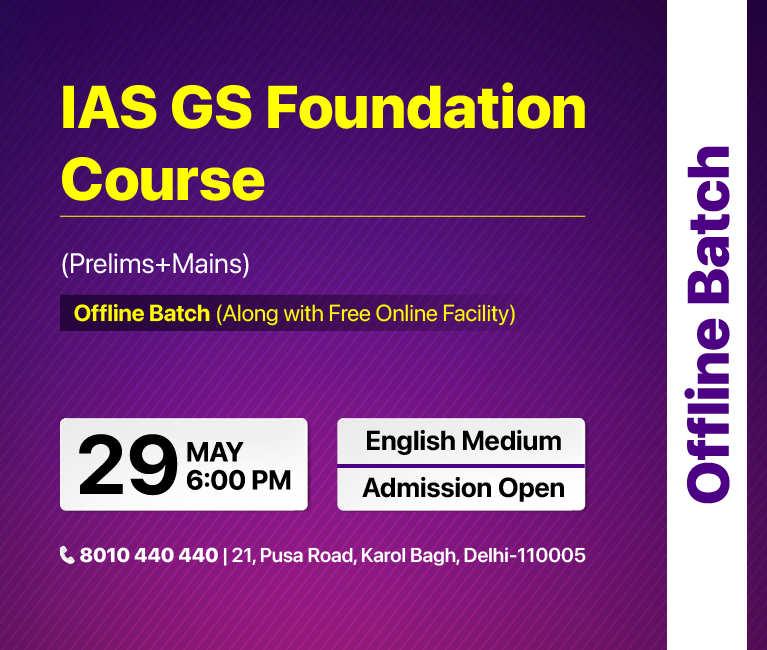
Indian Economy
Container Port Performance Index (CPPI) 2023
For Prelims: Sagarmala Programme, Major & Minor Ports, Shipbuilding Financial Assistance Policy (SBFAP), Foreign Direct Investment (FDI), Container Port Performance Index (CPPI)
For Mains: Scenario of India’s Port Ecosystem, Challenges Faced by Port Sector in India, Way Forward
Why in News?
India's port development program received a major boost as 9 ports from India were included in the Global Top 100 for the first time in the Container Port Performance Index (CPPI), 2023.
- The credit for this achievement has been given to the Sagarmala programme which has focused on the modernisation of the ports and improving their efficiency.
What are the Key Highlights of the CPPI 2023?
- About the Index:
- It is a global index developed by the World Bank and S&P Global Market Intelligence. It measures and compares the performance of container ports around the world.
- The index ranks 405 global container ports by efficiency, focusing on the duration of port stay for container vessels.
- Its primary aim is to identify areas for enhancement for the benefit of multiple stakeholders in the global trading system and supply chains, from ports to shipping lines, national governments, and consumers.
- It is a global index developed by the World Bank and S&P Global Market Intelligence. It measures and compares the performance of container ports around the world.
- Global Ranking:
- In the CPPI 2023 rankings, Yangshan Port in China is first, followed by the Port of Salalah in Oman. The Port of Cartagena is third, and Tangier-Mediterranean is fourth.
- India’s Position:
- Visakhapatnam Port jumped from 115 in 2022 to 19 in the 2023 rankings, becoming the first Indian port to reach the Global Top 20.
- Mundra Port also improved its position, rising from 48 last year to 27 in the current ranking.
- Seven other Indian ports, which secured ranks in the top 100, are Pipavav (41), Kamarajar (47), Cochin (63), Hazira (68), Krishnapatnam (71), Chennai (80) and Jawaharlal Nehru (96).
Sagarmala Programme
- The Sagarmala programme launched in 2015, a flagship initiative of the Ministry of Ports, Shipping and Waterways, represents a visionary approach by the Government to transform the country's maritime sector.
- With India's extensive coastline, navigable waterways, and strategic maritime trade routes, Sagarmala aims to unlock the untapped potential of these resources for port-led development and coastal community upliftment.
- It seeks to enhance the performance of the logistics sector by reducing logistics costs for both domestic and international trade.
- By leveraging coastal and waterway transportation, the program aims to minimise the need for extensive infrastructure investments, thus making logistics more efficient and improving the competitiveness of Indian exports.
What is the Scenario of India’s Port Ecosystem?
- About:
- According to the Ministry of Shipping, around 95% of India's trading by volume and 70% by value is done through maritime transport.
- In November 2020, the Prime Minister renamed the Ministry of Shipping as the Ministry of Ports, Shipping and Waterways.
- According to the Ministry of Shipping, around 95% of India's trading by volume and 70% by value is done through maritime transport.
- The Indian Government plays an important role in supporting the ports sector. It has allowed Foreign Direct Investment (FDI) of up to 100% under the automatic route for port and harbour construction and maintenance projects.
- Major Ports vs Minor Ports:
- Ports in India are classified as Major and Minor Ports according to the jurisdiction of the Central and State government as defined under the Indian Ports Act, 1908.
- All the 13 Major Ports are governed under the Major Port Trusts Act, 1963 and are owned and managed by the Central Government.
- All the Minor Ports are governed under the Indian Port Act, 1908 and are owned and managed by the State Governments.
- Ports in India are classified as Major and Minor Ports according to the jurisdiction of the Central and State government as defined under the Indian Ports Act, 1908.
- Under the National Perspective Plan for Sagarmala, six new mega ports will be developed in the country.
- Related Statistics:
- India is the sixteenth-largest maritime country in the world with a coastline of 7,516.6 kms. The Indian ports and shipping industry play a vital role in sustaining growth in the country’s trade and commerce.
- The Ports sector in India is being driven by high growth in external trade.
- In FY23, major ports in India handled 783.50 million tonnes of cargo traffic, implying a Compound Annual Growth Rate (CAGR) of 3.26% in FY16-23.
- In FY24 (April-January) cargo traffic handled by major ports stood at 677.22 million tonnes.
- Domestic waterways have found to be a cost-effective and environmentally sustainable mode of freight transportation.
- The government aims to operationalise 23 inland waterways by 2030.
- India is the sixteenth-largest maritime country in the world with a coastline of 7,516.6 kms. The Indian ports and shipping industry play a vital role in sustaining growth in the country’s trade and commerce.
- Major Initiatives:
- In 2023, the Ministry of Ports, Shipping, and Waterways proposed the Indian Ports Bill with the aim of enhancing transparency in port tariffs and updating penalties.
- The bill empowers the Maritime States Development Council (MSDC) for integrated planning and introduces a three-tier dispute resolution mechanism for conflicts between state maritime boards.
- To bolster the shipbuilding industry under the Make in India initiative, the Ministry introduced the Shipbuilding Financial Assistance Policy (SBFAP).
- This scheme, operational until March 2026, offers financial aid to Indian shipyards, encouraging competitiveness and securing global orders.
- In 2023, the Ministry of Ports, Shipping, and Waterways proposed the Indian Ports Bill with the aim of enhancing transparency in port tariffs and updating penalties.
Note
- India is home to the largest ship breaking facilities in the world with over 150 yards along its coast. On an average, close to 6.2 Million GT (Gross Tonnage) is scrapped in India every year, which accounts for 33% of the total scrapped tonnage in the world.
- India is recycling around 70 lakh GT every year, followed closely by Bangladesh, Pakistan and China.
- Alang Ship Breaking Yard in Gujarat being the world's largest ship recycling facility.
What are the Challenges Faced by Port Sector in India?
- Low Share of Indian Fleet in Global Shipping: Despite India's vast coastline and strategic location, the Indian fleet's share in global shipping remains minimal. As of recent statistics ,Indian ships constitute less than 1% of the world's shipping fleet, far behind countries like China. This is far behind countries like China (around 19%).
- However, India ranks third among nations supplying sailors, providing almost 10% of global seafarers, only behind China and Philippines.
- High Turnaround Times at Indian Ports: Indian ports are plagued with high turnaround times, affecting efficiency and increasing costs for shipping companies.
- For instance, the average turnaround time at major Indian ports was around 2.48 days in 2022, compared to the global average of 0.97 days.
- Poor performance at one port can disrupt schedules, increase import/export costs, reduce competitiveness, and hinder economic growth, especially affecting Landlocked Developing Countries (LLDCs) and Small Island Developing States (SIDS).
- Infrastructure and Operational Inefficiencies: Existing ports suffer from inadequate road and rail connectivity within the port area, lack of cargo handling equipment and machinery, poor hinterland connectivity, insufficient dredging capacity, and a shortage of technical expertise.
- Limited Supporting Infrastructure such as insurance and financing companies, are predominantly based outside India. For instance, many marine insurance companies are headquartered in London, making it challenging for Indian shipping firms to access cost-effective and reliable services domestically.
Way Forward
- Digitalisation: Digital and physical connectivity go hand in hand. Just as trade benefits from the latest technologies such as Artificial Intelligence (AI), the Internet of Things (IoT) and blockchain, port and shipping operations would also benefit from tapping the opportunities arising from digitalization.
- Port Modernisation: Port clients, i.e. the shipping lines and the traders, require fast, reliable and cost-efficient services to ships and cargo. Ports need to continuously invest in their technological, institutional and human capacities. Public and private cooperation is key in this regard.
- Widen the Hinterland: Ports should aim at attracting cargo from neighbouring countries and domestic production centres.
- There is a common interest between many seaports and traders in neighbouring countries, especially landlocked countries. Investments in corridors, regional trucking markets, and cross-border trade and transit facilitation can help expand ports’ hinterlands.
- Promote Sustainability: Port stakeholders are varied and may include shipping lines and traders, as well as social partners and the port-city community. Stakeholders are increasingly demanding that ports deliver on their social, economic and environmental sustainability obligations.
|
Drishti Mains Question Q. Analyse the current scenario of the Indian port ecosystem. Also, highlight the major challenges faced by the port sector in India. |
UPSC Civil Services Examination Previous Year Question (PYQ)
Q. Consider the following pairs: (2023)
| Port | Well known as |
| 1. Kamarajar Port | First major port in India registered as a company |
| 2. Mundra Port | Largest privately owned port in India |
| 3. Visakhapatnam Port | Largest container port in India |
How many of the above pairs are correctly matched?
(a) Only one pair
(b) Only two pairs
(c) All three pairs
(d) None of the pairs
Ans: (b)
Q. In India, the ports are categorized as major and nonmajor ports. Which one of the following is a nonmajor port? (2009)
(a) Kochi (Cochin)
(b) Dahej
(c) Paradip
(d) New Mangalore
Ans: (b)


International Relations
SIPRI Report on Nuclear Arsenal
Prelims: SIPRI report, Treaty on the Non-Proliferation of Nuclear Weapons (NPT), Comprehensive Nuclear Test Ban Treaty (CTBT), Treaty on the Prohibition of Nuclear Weapons (TPNW), Nuclear Suppliers Group (NSG), Missile Technology Control Regime (MTCR), Hague Code of Conduct against Ballistic Missile Proliferation, Wassenaar Arrangement, No-first-use policy
Mains: No-first-use policy, Nuclear arsenals, Nuclear diplomacy, Disarmament
Why in News?
Recently, a Stockholm International Peace Research Institute (SIPRI) report was released that highlighted the increased risk and instability associated with the ongoing modernisation and expansion of nuclear arsenals worldwide.
What are the Key Highlights of the Report?
- Global Nuclear Warheads:
- All nine nuclear-armed states (USA, Russia, UK, France, China, India, Pakistan, North Korea, and Israel) continued to modernise their nuclear arsenals.
- The total global inventory of nuclear warheads was approximately 12,121 as of January 2024, with about 9,585 in military stockpiles.
- Around 2,100 warheads were kept on high operational alert, primarily by Russia and the USA, but for the first time, China may have some warheads on high alert.
- Country-Specific Developments:
- Russia and USA: Together hold almost 90% of all nuclear weapons.
- China: China has significantly increased its nuclear arsenal from 410 to 500 by January 2024 and is expanding its nuclear arsenal faster than any other country.
- North Korea has approximately 50 warheads and materials for up to 90.
- Israel is modernising its arsenal and enhancing plutonium production capabilities (though not officially acknowledged).
- India and Pakistan:
- India now has 172 nuclear warheads as of January 2024, ranking 6th globally, ahead of Pakistan (170), and is emphasising longer-range weapons aimed at China.
- Nuclear Diplomacy Challenges:
- Nuclear arms control and disarmament diplomacy faced setbacks, particularly due to the war in Ukraine and Gaza.
- Tensions between Iran and the USA fluctuated and the Israel-Hamas war complicating diplomatic efforts.
- Significant setbacks included Russia's suspension from the New START treaty and withdrawal from the Comprehensive Nuclear-Test-Ban Treaty (CTBT) ratification.
- Global Security Concerns:
- It also highlighted issues like military expenditure, arms transfers, and the role of private military companies in conflicts.
- It also highlighted the risks related to artificial intelligence, outer space, cyberspace, and the protection of civilians in war zones.
SIPRI
- It is an independent international institute dedicated to research into conflict, armaments, arms control and disarmament.
- It was established in 1966 in Stockholm (Sweden).
- It provides data, analysis and recommendations, based on open sources, to policymakers, researchers, media and the interested public.
What are the Challenges and the Way Forward for India’s Nuclear Program?
- Challenges:
- India faces nuclear threats mainly from Pakistan and China due to border tensions and terrorist issues.
- Due to the rising threats of cyberattacks ensuring the safety and security of nuclear systems is crucial as any weaknesses could lead to consequences like alleged 2019 cyberattack on India's Kudankulam Nuclear Power Plant.
- The rapid advancement of hypersonic missiles, autonomous weapons, and AI poses new challenges for nuclear deterrence strategies.
- India's nuclear energy program faces challenges like the risks of radioactive contamination, environmental and health impacts.
- Way Forward:
- While maintaining credible minimum deterrence, India should responsibly modernise its nuclear arsenal by developing advanced delivery systems and Invest in advanced nuclear technologies like thorium-based reactors.
- India should engage in global nuclear governance initiatives like the Nuclear Security Summits and Global Initiative to Combat Nuclear Terrorism (GICNT) and should work on reducing nuclear risks with Pakistan and China through confidence-building measures.
International Treaties for Nuclear Programs
- Treaties Preventing Nuclear Proliferation and Testing:
- The Treaty on the Non-Proliferation of Nuclear Weapons (NPT).
- Partial Test Ban Treaty (PTBT): Banning nuclear weapon tests in atmosphere, outer space and under water.
- The Comprehensive Nuclear Test Ban Treaty (CTBT) was signed in 1996 but has yet to enter into force.
- The Treaty on the Prohibition of Nuclear Weapons (TPNW), which will enter into force on 22nd January 2021.
- Other Related Initiatives:
India’s Nuclear Program
- India tested its first nuclear device in May 1974, and remains outside both the Treaty on the Non-Proliferation of Nuclear Weapons (NPT) and the Comprehensive Nuclear Test Ban Treaty (CTBT).
- However, India has a facility-specific safeguards agreement in place with the International Atomic Energy Agency (IAEA) and a waiver from the Nuclear Suppliers Group (NSG) allowing it to participate in global civilian nuclear technology commerce.
- It was admitted as a member of the Missile Technology Control Regime (MTCR) in 2016, Wassenaar Arrangement in 2017 and Australia Group in 2018.
- In 2024, India initiated the core loading of India’s Prototype Fast Breeder Reactor (PFBR) at Kalpakkam, Tamil Nadu marking a significant milestone in India's nuclear program.
- India maintains its official commitment to no-first-use of nuclear weapons.
|
Drishti Mains Question: Q. Discuss the current status of India's nuclear arsenal and analyse the challenges it faces in the context of regional and global security dynamics. |
UPSC Civil Services Examination, Previous Year Question (PYQ)
Prelims:
Q. In India, why are some nuclear reactors kept under “IAEA safeguards” while others are not? (2020)
(a) Some use uranium and others use thorium
(b) Some use imported uranium and others use domestic supplies
(c) Some are operated by foreign enterprises and others are operated by domestic enterprises
(d) Some are State-owned and others are privately owned
Ans: (b)
Mains
Q. With growing energy needs should India keep on expanding its nuclear energy programme? Discuss the facts and fears associated with nuclear energy. (2018)


Biodiversity & Environment
Bonn Climate Conference 2024
For Prelims: Loss and Damage Fund, Conference of the Parties (COP 28), New Collective Quantitative Goal, Fossil Fuels
For Mains: Climate Finance and its Significance, Environmental Pollution & Degradation
Why in News?
The recent climate meeting in Bonn, Germany, did not achieve significant progress in defining a new climate finance goal.
- Countries have yet to make concrete advancements on issues concerning the funding required to address the climate crisis.
What is Climate Financing?
- About:
- It refers to large-scale investments required for actions to mitigate or adapt to climate change.
- Mitigation involves reducing greenhouse gas emissions, such as increasing renewable energy and expanding forest cover.
- Adaptation involves taking action to prevent or minimise the damage from adverse effects of climate change, such as building infrastructure to protect coastal communities from sea-level rise.
- It refers to large-scale investments required for actions to mitigate or adapt to climate change.
- Current Agreed Amount for Climate Financing:
- The 1992 United Nations Framework Convention on Climate Change (UNFCCC) mandated high-income countries to provide climate finance to the developing world.
- As per Copenhagen Commitment, 2009, developed countries agreed to provide USD 100 billion per year to developing countries by 2020.
- The Green Climate Fund was established in 2010 as a key mechanism to deliver climate finance.
- The Paris Agreement in 2015 reinforced the USD 100 billion target and extended it to 2025.
- Need for Increasing Amount:
- As per the UNFCCC 2021 Report, developing countries need approximately USD 6 trillion annually from 2021 to 2030 to implement climate action plans and around USD 4-6 trillion is annually required until 2050 for a global low-carbon economy transition.
- Tripling renewable energy capacity, as agreed in Dubai, is estimated to cost USD 30 trillion by 2030 as per the International Renewable Energy Association (IRENA).
- Combining these estimates suggests an annual requirement of USD 5-7 trillion, equivalent to about 5-7% of global GDP, highlighting the escalating cost of inaction.
- India has proposed a New Collective Quantified Goal (NCQG) of at least USD 1 trillion per year, focusing on grants and concessional finance.
- Arguments for Climate Financing:
- Developing countries argue that developed nations should provide financial assistance because the rich world's emissions over the last 150 years have caused the climate problem.
- High-income countries have not yet fulfilled their financial pledges for climate finance, as majority of the finance provided is in the form of loans.
- A recent report by the OECD said developed countries met the long-standing USD 100-billion-a-year promise in 2022. However, 69% of this was provided in the form of loans.
What are Issues Related to Climate Finance?
- Contention Between Developed and Developing Countries:
- Debate Over Contribution: Under the UNFCCC and the Paris Agreement, only the 25 countries listed in Annexure 2 of the UNFCCC, along with the European Economic Community, are obligated to provide climate finance to developing nations.
- Many other countries are now economically better off than in the early 1990s, are not part of Annexure 2 like China (world’s second-largest economy), oil-rich Gulf countries, and others like South Korea.
- While developing countries refer to Article 9 of the Paris Agreement, which mandates climate finance to flow from developed to developing countries.
- Recipient Prioritisation: Developed countries advocate for climate finance to prioritise the most vulnerable nations, such as least developed countries and small island developing states, while developing countries claim that all developing nations should be eligible for support.
- Debate Over Contribution: Under the UNFCCC and the Paris Agreement, only the 25 countries listed in Annexure 2 of the UNFCCC, along with the European Economic Community, are obligated to provide climate finance to developing nations.
- Definition and Nature of Climate Finance:
- Developing countries demand clarity on the definition of climate finance, insisting it should not include development finance and caution against double-counting.
- Issues of Mitigation and Adaptation:
- The balance between funding for mitigation (reducing emissions) and adaptation (adjusting to climate impacts) is a major point of contention.
- Currently, a significant portion of climate finance goes towards mitigation projects like renewable energy.
- However, developing countries argue that adaptation is crucial for their immediate survival, given the existing impacts like rising sea levels and extreme weather events.
What is the New Collective Quantitative Goal (NCQG)?
- It is a new annual financial target proposed in COP21 in 2015 to set a post-2025 climate finance goal that developed countries must meet from 2025 onward to provide climate finance to developing countries.
- It will replace the previous commitment of USD 100 billion per year that developed nations had pledged in Copenhagen Commitment, 2009 and under Paris Agreement (2015) but failed to deliver.
- The final NCQG amount will be a key negotiation point at the COP29 summit to be held in Baku, Azerbaijan, in November 2024.
- The NCQG negotiations aim to set a higher collective amount that wealthy countries will need to mobilise annually for mitigation, adaptation, and other climate action efforts in poorer nations vulnerable to the impacts of climate change.
- Securing an adequate NCQG figure is extremely important for developing countries, as a lack of sufficient climate finance has been a major barrier to implementing effective climate plans and building resilience against global warming's effects.
UN Framework Convention on Climate Change (UNFCCC)
- It is a global environmental treaty to reduce greenhouse gas concentrations to prevent harmful human-induced disruptions to the Earth’s climate system.
- It was officially ratified in 1992. It is also referred to as the Earth Summit, the Rio Summit, or the Rio Conference.
- The Conference of the Parties (COP), a supreme decision making body of UNFCCC hold meetings annually and convenes representatives from all 197 parties to assess the progress in combating climate change.
- In 1993, India became a party to the UNFCCC, with the Ministry of Environment, Forests, and Climate Change (MoEFCC) serving as its nodal agency.
|
Drishti Mains Question: Climate change disproportionately impacts developing countries, despite their lower historical contribution to greenhouse gas emissions. Discuss the importance of adaptation finance in addressing climate vulnerabilities and suggest ways to ensure its effectiveness. |
UPSC Civil Services Examination Previous Year Question (PYQ)
Prelims:
Q. With reference to the Agreement at the UNFCCC Meeting in Paris in 2015, which of the following statements is/are correct? (2016)
- The Agreement was signed by all the member countries of the UN, and it will go into effect in 2017.
- The Agreement aims to limit the greenhouse gas emissions so that the rise in average global temperature by the end of this century does not exceed 2ºC or even 1.5ºC above pre-industrial levels.
- Developed countries acknowledged their historical responsibility in global warming and committed to donate $ 1000 billion a year from 2020 to help developing countries to cope with climate change.
Select the correct answer using the code given below:
(a) 1 and 3 only
(b) 2 only
(c) 2 and 3 only
(d) 1, 2 and 3
Ans: B
Mains:
Q. Describe the major outcomes of the 26th session of the Conference of the Parties (COP) to the United Nations Framework Convention on Climate Change (UNFCCC). What are the commitments made by India in this conference? (2021)
Q. Explain the purpose of the Green Grid Initiative launched at the World Leaders Summit of the COP26 UN Climate Change Conference in Glasgow in November 2021. When was this idea first floated in the International Solar Alliance (ISA)? (2021)


Important Facts For Prelims
Summer Solstice 2024
Why in News?
Recently, 21st June has been marked as the day of the summer solstice in the northern hemisphere of the world.
- The summer solstice is celebrated as the beginning of summer, or midsummer when one of Earth’s poles is at its maximum tilt towards the sun.
What is the Summer Solstice?
- Origin:
- Origin of Summer Solstice can be traced to around 200 BC when ancient Greek scholar Eratosthenes, conducted a experiment to measure the Earth’s circumference.
- He observed that on the summer solstice, sunlight shone directly down a well in Aswan, Egypt, indicating the sun was directly overhead.
- By calculating the difference in shadow lengths between Awan and Alexandria cities and the distance between them, Eratosthenes was able to provide an early and accurate estimate of the Earth’s circumference.
- About:
- The summer solstice marks the longest day of the year, when the sun reaches its highest point in the sky.
- During the solstice, the Earth’s axis (around which the planet spins, completing one turn each day) is tilted in a way that the North Pole is tipped towards the sun and the South Pole is away from it.
- Typically, this imaginary axis passes right through the middle of the Earth from top to bottom and is always tilted at 23.5 degrees with respect to the sun.
- At the Arctic Circle(66°33′ north latitude), the sun never sets during the solstice.
- The amount of light received by a specific area in the Northern Hemisphere during the summer solstice depends on the latitudinal location of the place.
- Effect:
- During this, countries in the Northern Hemisphere are nearest to the Sun and the Sun shines overhead on the Tropic of Cancer (23.5° North).
- The Earth rotates on its axis, causing the Northern Hemisphere to receive more direct sunlight between March and September.
- The amount of incoming energy the Earth receives from the sun on this day is 30% higher at the North Pole than at the Equator.
- Cultural Significance:
- In many cultures, summer Solstice is a significant time of the year which marks festivals and rituals across the globe.
Note:
- Summer solstice in the Southern Hemisphere occurs on 22nd December each year.
UPSC Civil Services Examination Previous Year Questions (PYQs)
Prelims:
Q. On 21st June, the Sun (2019)
(a) does not set below the horizon at the Arctic Circle
(b) does not set below the horizon at Antarctic Circle
(c) shines vertically overhead at noon on the Equator
(d) shines vertically overhead at the Tropic of Capricorn
Ans: (a)


Important Facts For Prelims
New Freshwater Diatom Genus Discovered
Why in News?
Recently, scientists have discovered a new genus of freshwater diatom - Indiconema, a microscopic algae crucial to life, in the clean rivers of the Eastern and Western Ghats.
What are the Key Features of Indiconema?
- It has been named Indiconema to value its restricted distribution in the country.
- This genus features unique valve symmetry and a distinct valve structure, differing significantly from other members in the Gomphonemoid group.
- It has pore fields at both the head and foot poles, unlike others that have them only at the foot pole.
- Indiconema was found in both the Eastern and Western Ghats, reflecting the shared endemic elements between these mountain systems seen in other endemic-rich groups such as reptiles.
- Morphological features suggest that Indiconema is closely related to Afrocymbella, a genus endemic to East Africa, highlighting biogeographic connections between Indian and East African diatom species.
What are Diatoms?
- Diatoms are microscopic algae producing 25% of the global oxygen supply, forming a critical base of the aquatic food chain.
- They are sensitive indicators of aquatic health due to their responsiveness to changes in water chemistry.
- Diatoms are the first recorded microorganisms in India, with Ehrenberg's (a German naturalist and zoologist) first report dating back to 1845 in his publication Mikrogeologie.
- India hosts approximately 6,500 diatom taxa, with about 30% being endemic, reflecting the country's unique biodiversity.
- Diverse biogeographic zones in India support various diatom species across different habitats, including freshwater, marine environments, and high mountain regions.
- The evolution of monsoons and the resulting rainforest biome in the Indian Peninsula has significantly influenced diatom flora.
- The unique physiographic and climatic gradients of the Eastern and Western Ghats provide a wide array of habitats for distinct diatom species.
UPSC Civil Services Examination, Previous Year Question (PYQ)
Prelims:
Q. Consider the following kinds of organisms: (2021)
1. Copepods
2. Cyanobacteria
3. Diatoms
4. Foraminifera
Which of the above are primary producers in the food chains of oceans?
(a) 1 and 2
(b) 2 and 3
(c) 3 and 4
(d) 1 and 4
Ans: (b)
Q. Which one of the following is the correct sequence of a food chain? (2014)
(a) Diatoms-Crustaceans-Herrings
(b) Crustaceans-Diatoms-Herrings
(c) Diatoms-Herrings-Crustaceans
(d) Crustaceans-Herrings-Diatomsol
Ans: (a)


Rapid Fire
International Day of Yoga 2024
The 10th International Day of Yoga (IDY) is being celebrated on 21stJune 2024 with the theme of “Yoga for Self and Society”.
- 21st June was declared as the IDY by the United Nations in 2014, by resolution 69/131.
- The resolution to establish this day was proposed in the 69th session of the UN by India and was endorsed by 175 member states.
- The first International Day of Yoga (IDY) was celebrated in 2015 with the theme "Yoga for Harmony and Peace".
- The inaugural IDY event in New Delhi set two Guinness World Records: one for the largest yoga session with 35,985 participants and another for the most nationalities (84) participating in a single session.
- The World Health Organisation (WHO) recognises yoga as a powerful tool for promoting a healthier lifestyle, improving both physical and mental health, and controlling Noncommunicable Diseases (NCDs).
- Yoga can play a crucial role in achieving the Sustainable Development Goals (SDGs), including a 15% relative reduction in physical inactivity by 2030.
- The Ministry of Youth Affairs and Sports recognised Yoga as a sports discipline and placed it in the ‘Priority’ category in 2015.


Rapid Fire
India-Australia CECA Negotiations
Australia is pushing to finalise the Comprehensive Economic Cooperation Agreement (CECA) with India by the next 6-7 months, ahead of their federal elections scheduled for mid-2025.
- CECA is a comprehensive trade agreement between India and Australia.
- It is more comprehensive than earlier India-Australia Economic Cooperation and Trade Agreement (ECTA).
- The ECTA is a limited trade agreement that came into force in December 2022.
- CECA negotiations were launched in May 2011, which were suspended in 2016 and again re-launched in 2021 with the intention of quickly concluding an ECTA to liberalise and deepen bilateral trade in goods and services, and to then use this foundation to resume negotiations on the more ambitious CECA.
- The CECA is intended to cover 5 main tracks i.e. goods, services, digital trade, government procurement and Rules of Origin/Product Specific Rules Schedule.
- New areas of interest include competition policy, MSMEs, innovation, agri-tech, critical minerals and sports.
- In 2023-24, India's imports from Australia declined 15% to USD 16.15 billion, while India's exports increased 14.23% to USD 7.94 billion. Australia is India's 13th largest export destination and 14th largest import source for India.
Rapid Fire
Security in Parliament
In April 2024 the Central Industrial Security Force (CISF) was handed over to the security of the Parliament after an extraordinary security breach at Parliament House on 13th Dec 2023.
- Parliament security is a part of the Lok Sabha Secretariat. Earlier, security responsibilities were with the Parliament Security Service (PSS) and Watch and Ward committee.
- The Watch and Ward Committee was set up on the initiative of Vithalbhai Patel, president of the Central Legislative Assembly.
- The committee was set up after the incident of 8th April 1929, when revolutionaries Bhagat Singh and Batukeshwar Dutt threw bombs and pamphlets into the Assembly.
- The committee's name was changed in 2009 to PSS, which is under the control of the Speaker.


Rapid Fire
IPBES wins Blue Planet Prize
Recently, the Intergovernmental Platform on Biodiversity and Ecosystem Services (IPBES) won the Blue Planet Prize for 2024.
- IPBES was awarded as "the leading global authority on the state of knowledge and science about biodiversity, ecosystem services and nature's contributions to people".
- The other awardee is Robert Costanza from the Institute for Global Prosperity, University College London, for his contributions to the field of ecological economics.
- About Blue Planet Prize:
- It was established in 1992, the year of the Rio Earth Summit.
- This award is given annually by Japan's Asahi Glass Foundation for outstanding achievements in scientific research and its application which have helped to solve global environmental problems.
- Two winners are chosen every year and the prize includes an award of USD 500,000.
- About IPBES:
| About |
|
| Established |
|
| Goal |
|
|
Relations with UN |
|
Read More: Intergovernmental Negotiating Committee: UNEP, Environmental Conventions (Climate Change).





